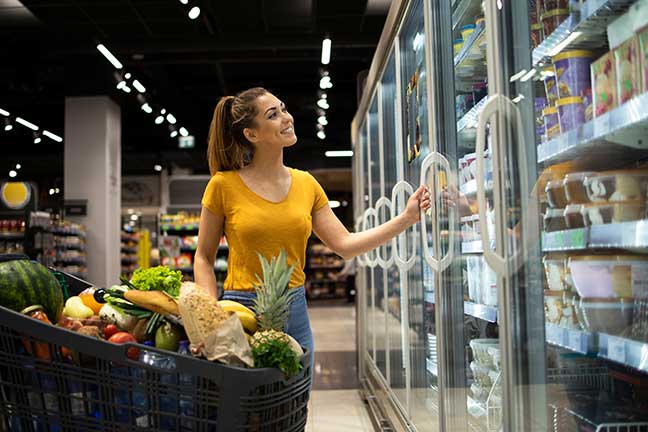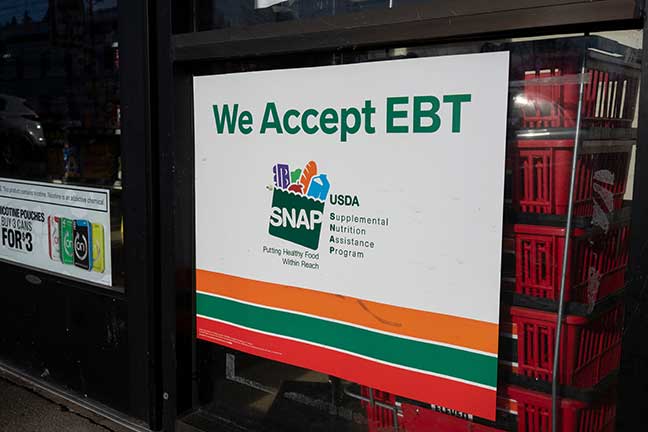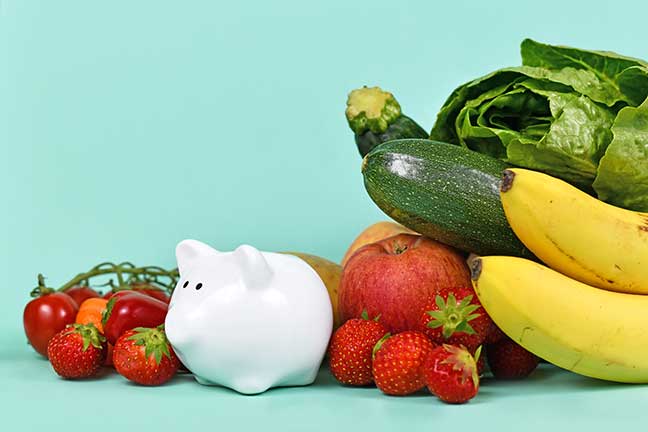While we all know that “an apple a day” by itself is not enough to keep doctors ways, the importance of having a well-balanced diet can not be overstated.
However, the truth remains that most of us are not eating enough fruits and vegetables. For example, data from Centers for Disease Control and Prevention suggests that only 10% of Americans eat enough vegetables and 12% have enough fruits on a daily basis. In other words, most of us are eating less than 2 to 4 cup equivalents of vegetables each day.
You may be thinking that the cost of fruits and vegetables is rising and they are less efficient in providing the energy needed for daily activities compared to meat or dairy products. But we shouldn’t overlook the abundant nutrition in fruits and vegetables, such as vitamins, minerals, and antioxidants that play an irreplaceable role in maintaining both our physical and mental health.
More importantly, incorporating fruits and vegetables into our diet can be less expensive if you can find the right places, discounts and take advantage of government assistance programs. So without further delay, let us explore some important money-saving tips for buying fruits and vegetables with you.
Plan before you shop
Creating a plan before shopping is an old but effective way to save money on various groceries, including fruits and vegetables.
A grocery list or meal planning can help you avoid impulse purchases and stay within your grocery budget. In the case of fresh fruits and veggies, sticking to the original plan may also prevent food wasting caused by overstocking.
Buy in bulk
If you have a large household or can store produce properly at home, it’s worth considering buying certain foods that that have a longer shelf life in bulk while creating your grocery list. Usually, you can enjoy lower price by purchasing in bulk.
Though most fresh produce has a limited lifespan, there are a few exceptions. Fruits like apples, citrus and pomegranate can last as long as two months in refrigerator. Beets, cabbage, sweet potatoes, onions and carrots are among vegetables that can last for weeks or even months if stored appropriately.
Go for local produce
It’s no secret that roadside farm stands can offer great deals on fresh locally grown fruits and veggies as they have a shorter supply chain and lower rental and headcount costs.
In addition, many local farmers and growers offer direct-to-consumer sales through farmers’ markets or community-supported agriculture (CSA) programs. Cutting out the middleman allows farmers to set prices at a lower level compared to regular grocery stores. You may also find cheaper organic produce at farmer’s market or roadside stands. Many farmers follow organic farming practice, even though their products may not certified.
Look for seasonal produce
The classic law of supply and demand also applies to fruits and veggies. When they are in season, the supply increases sharply, which drives prices down. By purchasing in-season local produce, you may find fresh produce at much lower prices.

Buy frozen produce
Aside from seasonal fruits and veggies, canned and frozen produce can be alternative ways to save money when you need cheaper out-of-season produce or want to buy in bulk.
In general, frozen vegetables and fruits have similar nutritional value as fresh ones as they are frozen immediately after harvesting. They are easier to store and can be used in various recipes like smoothies or stews.
Some frozen fruits may contain less vitamin C. When in doubt, visiting the Healthy Eating page of the U.S. Department of Agriculture can provide useful tips on choosing frozen and canned produce.
Grow your own veggies
If you have a yard, consider growing your own vegetables to save money on produce, especially easy-to-grow items like potatoes, tomatoes, lettuce and cucumbers. While it requires time, effort and gardening knowledge, the benefits are enormous. Think about the taste of fresh produce and the money you can save from having your own veggie garden. Plus, you can also grow herbs in the garden.
There are many videos sharing gardening tips online, which can help you gain basic knowledge about plants. If you don’t have the space or have no interest in gardening, consider joining a community garden.
Try creative recipes
Oftentimes, we only eat certain types of vegetable or parts of a vegetable. Searching for more recipe ideas for cooking less popular veggies or how to use every bit of a vegetable is a fantastic way to spend less on vegetables while maintaining a healthy diet.
The U.S. Department of Agriculture also provides a wide range of recipes that can fit your budget in its Recipe Collection.
Choose imperfect foods
Throwing away your bias against imperfect fruit and veggies can save you a fortune. Though bruised or squished produce may not look appealing, it doesn’t necessarily mean that the fruit or vegetable is spoiled or unsafe for consumption.
Groceries and supermarkets typically sell bruised and squished produce at discounted prices, offering a great opportunity to save money. Besides, you may also consider using imperfect fruits to make jam.

Enroll in government assistance programs
The federal and state governments provide food assistance through various programs for low income individuals and families. If you meet specific eligibility requirements, you can enjoy nutritious food such as veggies and fruits at affordable prices.
Supplemental Nutrition Assistance Program (SNAP)
SNAP, formerly known as food stamps, was set up to provide needy families and individuals with payment assistance to buy nutritious food. The program’s basic eligibility requirements include identity (U.S. citizen or legal alien), work requirements and income limits.
Under SNAP, the benefits are deposited directly into Electronic Benefits Transfer (EBT) cards. SNAP recipients can use them the same way as they do for debit cards to buy eligible food, such as fruits, vegetables, meat, poultry, fish and dairy products, in authorized food stores or Farmers’ Markets.
Women, Infants & Children Program (WIC)
If you are pregnant or breastfeeding and need support on nutritious foods or breastfeeding, WIC is the program you need to access nutritious food and supplements.
The program offers supplemental food packages to help participants maintain a nutritious diet, along with nutrition education classes and free consultation sessions with registered dietitian. If you are a recipient of Medicaid or SNAP, you will be automatically eligible for WIC.
Save more to boost your food budget with Easy Wireless
Once you’re enrolled in SNAP or WIC, you could be eligible for Lifeline and the Affordable Connectivity Program (ACP), another two federal programs that allow you to save more on mobile and internet service plans.
The deal is further sweetened if you sign up for these programs through EASY Wireless! As a trusted service provider, EASY Wireless use these government discounts to create a special FREE unlimited package for qualified customers, which include FREE unlimited data, FREE unlimited talk, FREE unlimited text, FREE SIM card kit and activation, and the flexibility of keeping your own number or getting a new one. If you live in certain states, you may even score a FREE smartphone.
To get started with EASY Wireless, apply online now!


